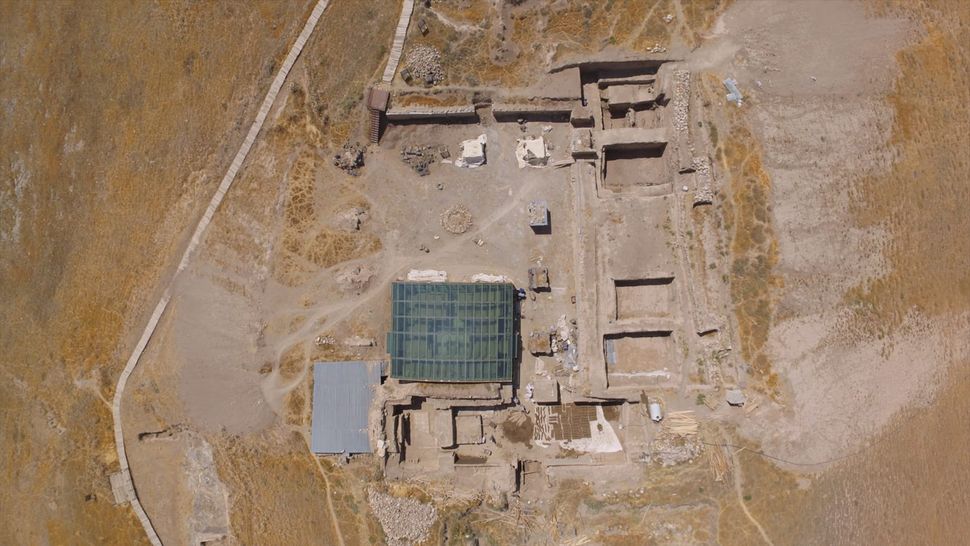These human remains may hint at the collapse of the ‘magnificent’ city of Ayanis.
Archaeologists in Turkey have unearthed the skeleton of an elite individual who may have met an untimely death during an earthquake in the region 2,700 years ago.

Aerial view of the skeleton found this year at Ayanis Castle. (Image credit: Mehmet Işıklı)
Wearing jewelry and surrounded by weapons and artifacts, such as a double-sided inscription, and seals – small items used for “designating signature, private property, ownership and authority,” this individual no doubt lived an opulent life in the eighth century B.C. until they fell to their death within the fortress, with their personal belongings in tow, said Mehmet Işıklı, head of the Ayanis excavations and professor in the Atatürk University Department of Archaeology.
The fortress was built in Ayanis, an Urartian center in Turkey’s Van province where the skeleton was found. The Iron Age kingdom of Urartu reigned from the ninth to sixth centuries B.C.and spanned from what is now Armenia to western Iran to eastern Turkey, where Ayanis is located.
Scholars have long speculated that an earthquake and subsequent fire caused the downfall of Ayanis. Since excavations began there in the late 1980s, there has been a “lack of such evidence to support the proposed earthquake scenarios for the end of the city,” Işıklı told Live Science via email. The finding of this skeleton lends critical evidence to the earthquake hypothesis, Işıklı said.
Anthropological analysis will be conducted on the skeleton to determine the individual’s age and sex, and to verify if any traces of the brain remain, although there is debate among researchers as to whether any soft tissue remains.

The recently restored Haldi Temple. (Image credit: Mehmet Işıklı)
A double-sided inscribed cuneiform tablet, found with the skeleton, will be translated and published soon. Depending on the content of the inscription, it may be possible to determine this individual’s role and class in Urartian society, as well as to give valuable context to the social or political activities at Ayanis.
According to Işıklı, not only is the skeleton “extremely well preserved” but “the skull is in good condition, and according to the preliminary information we have received,” there may be chemically degraded traces of the brain remaining.

Aerial view of the temple area. (Image credit: Mehmet Işıklı)
Erkan Konyar, an associate professor in the Department of Ancient History at Istanbul University who is not involved in the finding but has excavated other Urartian findings, warned that brain tissue does not typically survive in the climate of Van, which includes the massive Lake Van and is over a mile above sea level (5,380 feet, or 1,640 meters). Rather, brain tissue is likely to survive only in swampy or glacial environments. Evidence that first appears to be brain tissue are actually “traces formed by hardened soil,” Konyar told Live Science in an email. Işıklı said further anthropological testing is needed to confirm the remains of tissue, along with other characteristics of the skeleton.
After the “magnificent” city of Ayanis was built by King Rusa II in the mid-seventh century B.C., “the kingdom quickly entered the process of collapse and collapsed shortly after,” Işıklı said. Therefore, clues to the kingdom’s collapse may lie within the walls of the Ayanis citadel. Ayanis is “the only excavation project that has the potential to solve the problems of this peak and collapse of the kingdom,” Işıklı said.
Previous excavations within the citadel have unearthed the Haldi Temple, which has undergone restoration since 2020, along with its stone carvings honoring Haldi, the premier god in Urartian religion. A number of rooms in the temple have been excavated recently, and there are plans to create an open-air museum for tourists to visit the temple.